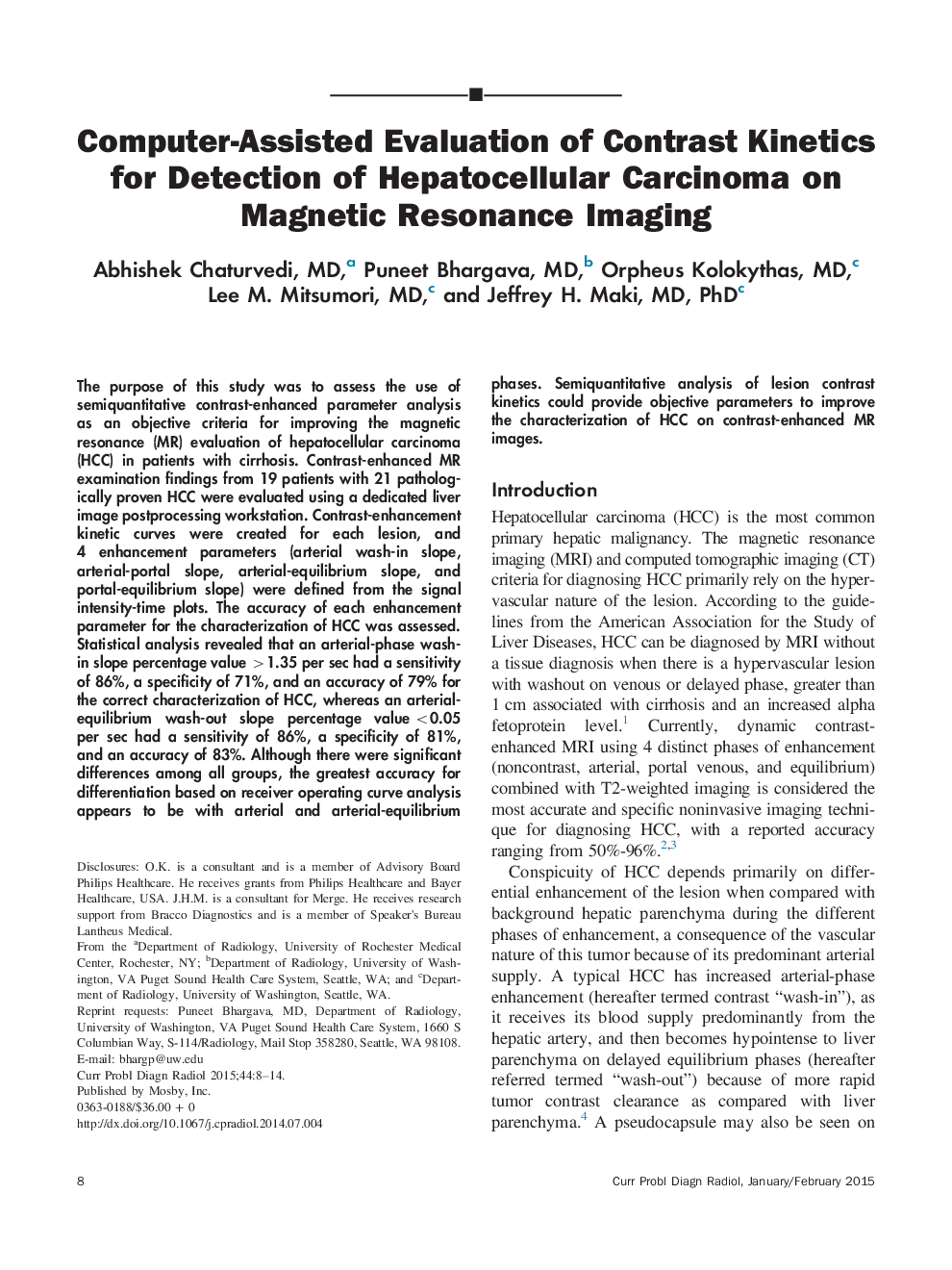| Article ID | Journal | Published Year | Pages | File Type |
|---|---|---|---|---|
| 4223409 | Current Problems in Diagnostic Radiology | 2015 | 7 Pages |
The purpose of this study was to assess the use of semiquantitative contrast-enhanced parameter analysis as an objective criteria for improving the magnetic resonance (MR) evaluation of hepatocellular carcinoma (HCC) in patients with cirrhosis. Contrast-enhanced MR examination findings from 19 patients with 21 pathologically proven HCC were evaluated using a dedicated liver image postprocessing workstation. Contrast-enhancement kinetic curves were created for each lesion, and 4 enhancement parameters (arterial wash-in slope, arterial-portal slope, arterial-equilibrium slope, and portal-equilibrium slope) were defined from the signal intensity-time plots. The accuracy of each enhancement parameter for the characterization of HCC was assessed. Statistical analysis revealed that an arterial-phase wash-in slope percentage value >1.35 per sec had a sensitivity of 86%, a specificity of 71%, and an accuracy of 79% for the correct characterization of HCC, whereas an arterial-equilibrium wash-out slope percentage value<0.05 per sec had a sensitivity of 86%, a specificity of 81%, and an accuracy of 83%. Although there were significant differences among all groups, the greatest accuracy for differentiation based on receiver operating curve analysis appears to be with arterial and arterial-equilibrium phases. Semiquantitative analysis of lesion contrast kinetics could provide objective parameters to improve the characterization of HCC on contrast-enhanced MR images.
